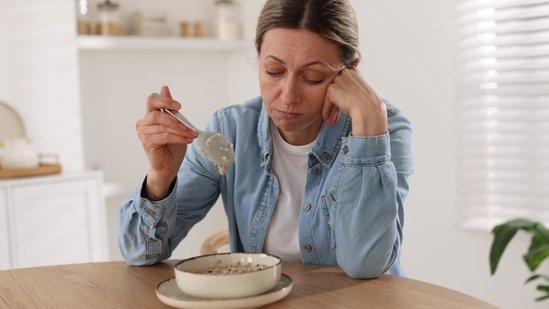Still, it wasn’t until a decade ago, when a study found that the microbiomes of professional rugby players were more diverse than those of sedentary people, that scientists realised the myokines may also interact with the gut.
Elite athletes tend to have a better diet than the average person, which affects the diversity of the microbiome. But nutrition alone does not explain the finding, says co-author of the review Professor John Hawley.
“When you remove training stimulus on the background of the same diet you lose microbe diversity,” says Hawley, the director of the Mary MacKillop Institute for Health Research at Australian Catholic University. “And you lose it dramatically within several weeks.”
The physical activity and microbiome loop

Understanding the muscle-gut axis could lead to new interventions for health issues like IBD.Credit: Getty Images
The next step was understanding the mechanics: How does exercise alter our microbiome? How does our microbiome alter our performance? And what is the impact on our health?
As our muscles release myokines, when we exercise, they trigger behaviour change in our organs so they can respond to the activity, says co-author Associate Professor Sam Forster, the research group head of Microbiota and Systems Biology at the Hudson Institute of Medical Research.
“We think the same is happening with the gut microbes,” Forster says.
The myokines communicate with the gut microbes, inducing a change in them: “They’re told to change what they’re doing, and provide beneficial nutrients, like short chain fatty acids.”
Short chain fatty acids [SCFAs] are typically produced by the gut microbiota during the fermentation of dietary fibre and are used by the muscles as fuel during exercise.
When we have more bacteria that are high SCFA-producers, the cells are also better primed for the exercise that we do, enhancing both performance and recovery.
“It’s the reciprocal benefit where you have the right microbes today so when you go to the gym tomorrow that training regimen is more effective,” he explains.
SCFAs also have an anti-inflammatory effect, creating a “loop” where the muscles stimulate a response in the microbiome, which primes our muscles for exercise, reducing inflammation.
When we are inactive, we lose the health benefits of the loop.
“Low muscle mass reduces the production of the myokines that help regulate inflammation, support gut lining strength, and keep gut bacteria healthy,” Newton explains.
For example, one study found that up to 42 per cent of IBD [Inflammatory Bowel Disease] patients have sarcopenia (low muscle mass), while another found that frailty was associated with an 80 per cent increased risk of developing irritable bowel syndrome.
Getting to the guts of good performance and better health

A diverse diet creates a diverse microbiome.Credit: Getty Images
A diet rich in beans, nuts, seeds, whole grains, fruits and vegetables, and fermented foods remains the best way to support our guts.
However, many probiotics are sold with the promise of supporting our microbiome.
If our microbiome can improve our performance, could a probiotic improve athletic performance? Or, if exercise can be used therapeutically to reduce inflammation in the gut, can we exercise away conditions like IBD?
Not exactly.
The problem with probiotics currently is the two main species – lactobacilli and bifidobacteria – are not necessarily helpful, says Forster.
“Bifidobacteria is prevalent in breast milk so it’s a good probiotic in babies but in an adult it’s less relevant,” he says. “Lactobacilli is very prominent in the female reproductive tract and very common in the mouse gut microbiome, but far less common in the human gut microbiome.”
More research is needed to understand whether the benefits come from diversity in the whole microbiome or from certain species.
Eventually, Forster imagines, there will be specific pre-training prebiotics and post-training probiotics to get the right mix of bacteria to enhance our performance.
“In the same way you’re thinking: ‘what should my diet be when I’m training?’, you’ll be thinking about: ‘what should my microbiome be when I’m training’?”
As for prescriptive exercise to alleviate symptoms in different illnesses, researchers, including Hawley, are looking into whether one exercise regimen is more effective than another. What is clear is that we need regular exercise (at least three times a week) and to incorporate some intensity to stimulate a response in the gut.
It’s an exciting area of research Hawley says: “It shows how potent exercise can be.”
Make the most of your health, relationships, fitness and nutrition with our Live Well newsletter. Get it in your inbox every Monday.







